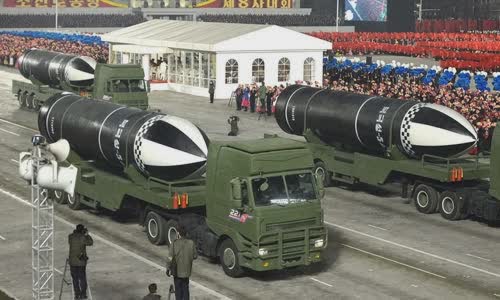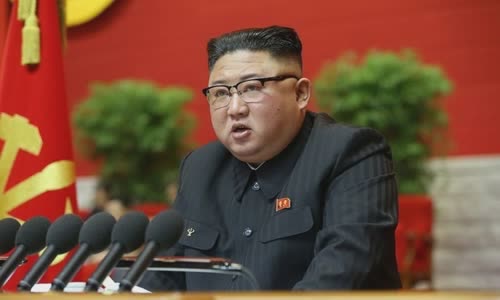North Korea launched the Pukguksong-5 ballistic missile and did not mention "denuclearization", apparently wanting to send a tough message to the Biden administration.
North Korea on the night of January 14 held a parade in the capital, Pyongyang with the participation of a series of military weapons, including the Pukguksong-5 submarine-launched ballistic missile (SLBM) model.

Pukguksong-5 missile during the parade in Pyongyang on the night of January 14 Photo: KCNA
"The world's most powerful weapon, the submarine-launched ballistic missile, demonstrates the strength of the revolutionary armed forces," said North Korea's central news agency KCNA, adding that the missile has "
The force show comes just a week before President-elect Joe Biden takes office, not long after Kim Jong-un's leader declared America "the biggest obstacle to the revolution and its greatest enemy."
It is not clear whether the four Pukguksong-5 bullets displayed by North Korea are complete or modeled missiles, but their appearance suggests they were developed on the Pukguksong-3 and Pukguksong-4 missile platforms.
The Pukguksong-4 first appeared in public during a large-scale parade in October 2020, with no indication that the missile was tested.
Image analysis showed that Pukguksong-5 was longer and wider than Pukguksong-4, mainly in the regulated nose.
Although harder to build than a liquid-fuel engine, solid-fuel rockets have outstanding advantages.
Solid-fuel rockets also take less time and effort to maintain and move than liquid fuels, making them suitable for submarines because of their high level of safety, reducing the risks associated with rockets that use fuel.
North Korea has been actively pursuing the development of SLBM for many years, but has not achieved significant results in deploying this weapon into practice.
"The message of 'destroy the enemy outside the territory' shows that the Pukguksong-5 will be a strategic weapons system. This is in line with Pyongyang's ballistic missile development efforts over the years, in which
Kim Jong-un also earlier announced that North Korea would expand its nuclear weapons program and strengthen its military capabilities, outlining plans to deploy long-range ground-launched ballistic missiles or submarines with "head

North Korean leader Kim Jong-un at the 8th Korean Labor Party Congress Photo: KCNA
During the 8th Korean Labor Party Congress, Kim Jong-un said the country had developed a variety of sophisticated weapons such as tactical nuclear weapons, reconnaissance satellites and supersonic missiles.
Experts have not been able to validate these claims, especially since North Korea has not launched a converted submarine to carry the SLBM.
The series of statements and show of force also seems to be intended to put pressure on the Biden government, and at the same time broadcast a signal to Korea.
Biden once called the North Korean leader a "ruffian" and criticized President Donald Trump's approach to controlling Pyongyang's nuclear capabilities.
Kim Jong-un remains open to dialogue with the US, but urges Washington to abandon hostile policies aimed at Pyongyang.
Park Won-gon, professor of international relations at Handong Global University in Seoul, pointed out that the term "bihaekhwa" (denuclearization) was not mentioned at all during this party session, posing a lot.
"If they return to the negotiating table with Washington, Pyongyang is likely to demand arms control agreements such as the Cold War era, to reduce mutual threats from nuclear weapons and recognize North Korea as the nation."
Kim Jong-un's remarks came amid a Korean economy struggling with sanctions, natural disasters and the Covid-19 pandemic, which forced the country to close its borders with its Chinese ally.
"The message to the US is that North Korea will continue to develop nuclear deterrent capacity, unless Washington makes specific concessions. The issue is how the US will react," said Professor Park.



 Enelrahc Nahilaam
Enelrahc Nahilaam







